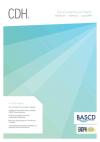Community Dental Health

- Cover Date:
- June 2019
- Print ISSN:
- 0265 539X
- Electronic ISSN:
- 2515-1746
- Vol:
- 36
- Issue:
- 2
Identifying the barriers and facilitators for homeless people to achieve good oral health
10.1922/CDH_4488Csikar06
Objective: A qualitative exploration of the barriers and facilitators for people experiencing homelessness achieving good oral health. Participants: Adults using two homeless centres in Leeds. Methods: Focus group discussions were convened with homeless people using support
services. Both an inductive and deductive approach to data analysis was taken. Themes were identified and then a framework applied
to analysis using Nvivo software. Results: Three focus group discussions with 16 participants were conducted with people experiencing
homelessness. The barriers identified were insufficient information on local dental services, negative attitudes of oral health professionals,
low priority of dental care, anxiety and cost of dental treatments. Facilitators included single dental appointments, accessible dental locations and being treated with respect. Conclusions: Despite the barriers that prevent people experiencing homelessness from maintaining
and improving their oral health, the participants were aware that they needed oral healthcare and requested that dental services were made
available to them and were accessible in line with their socioeconomic status and needs.
Key words: Oral Health, Homeless Persons, Qualitative Research
- Article Price
- £15.00
- Institution Article Price
- £
- Page Start
- 137
- Page End
- 142
- Authors
- J. Csikar, K. Vinall-Collier, J.M. Richemond, J. Talbot, S. T. Serban, G.V.A. Douglas
Articles from this issue
- Title
- Pg. Start
- Pg. End
- Editorial - How soon is soon enough? The challenge of implementing behaviours conducive to good oral health in at-risk infants and toddlers
- 89
- 90
- What influences use of dental services by the Korean disabled people? The role of perceived barriers in dental care system
- 101
- 105
- In-school toothbrushing programs in Aboriginal communities in New South Wales, Australia: A thematic analysis of teachers’ perspectives
- 106
- 110
- Relationship between Caregivers’ Oral Health Literacy and their Child’s Caries Experience
- 111
- 117
- The Effectiveness of Reform in the Dental Health Systems of Transitional Countries: The Case of Montenegro Health Reform (pilot study)
- 126
- 130
- Costs of dental care and its financial impacts on patients in a population with low availability of services
- 131
- 136
- Comparison of two measures to determine the oral health-related quality of life in elders with periodontal disease
- 143
- 149
